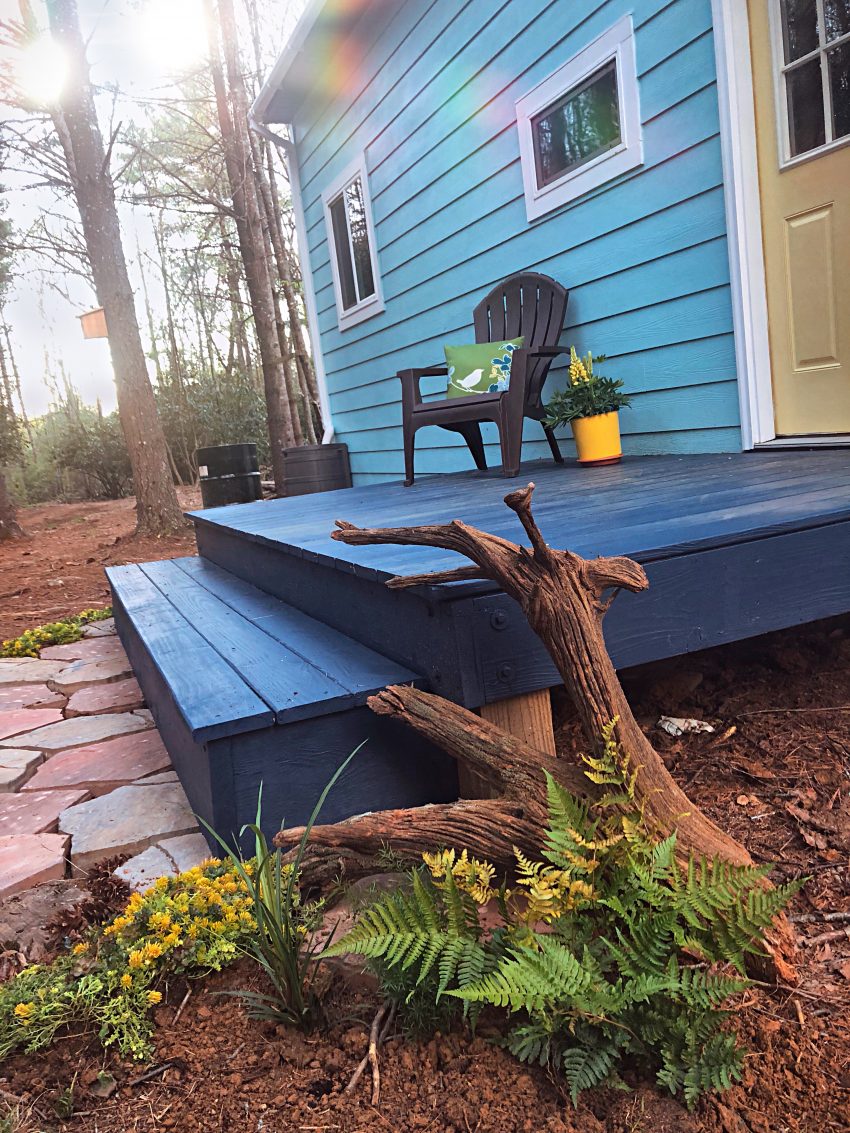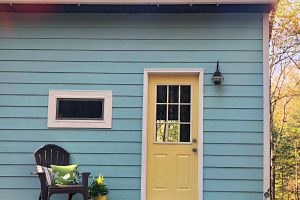Comprehensive Guide to DIY Projects
For many, DIY projects go beyond mere repairs or renovations. They are a means of self-expression, a way to infuse personality into living spaces. Enthusiasts find joy in the process, from envisioning a project to executing it with their own hands. For this reason, the surge in DIY enthusiasts has transformed how people approach enhancing their living spaces. This article explores the reasons behind this shift and provides insights into the world of DIY projects.
What is a DIY Project?
A DIY project, or Do-It-Yourself project is characterized by the homeowner taking the lead role in planning, executing, and completing a task without professional assistance. It’s about taking on the responsibility of home improvement personally and therefore it embodies a hands-on, learning-by-doing approach. This can range from simple tasks like painting a room to more complex undertakings like installing a new kitchen backsplash.
Advantages of DIY Projects
1. Cost Savings
DIY projects often come with a significantly reduced price tag. By eliminating labor costs and only paying for materials, homeowners can stretch their budget further, allowing for more ambitious projects.
2. Personal Satisfaction
The pride derived from seeing a project through from inception to completion is unparalleled. It’s a tangible accomplishment that stays with you long after the paint has dried or the furniture is assembled. DIY also allows for complete control over the design and execution of a project. Whether it’s tweaking designs or incorporating last-minute additions, the ability to customize your living space to match your taste is a powerful motivator.
3. Skill Development
Engaging in DIY projects is an excellent way to acquire new skills. From basic carpentry to intricate tiling, each project presents an opportunity to expand your skill set. Successfully completing DIY projects is also a great way to build confidence. As you tackle increasingly complex tasks, you’ll find yourself more willing to take on challenges in other aspects of life.
4. Flexibility and Convenience
DIY projects don’t need to adhere to a professional’s schedule as you are the one in the driver’s seat. You have the luxury of working at your own pace and when it is convenient for you, making it an ideal option for those with busy lives or irregular schedules. You also have complete control over the project timeline allowing you to decide if you want to finish a task on a weekend or spread it out over several weeks, the choice is yours.
5. Creative Expression
Expressing your unique style is a hallmark of DIY projects. Whether you lean towards an elegant modern look or a more robust industrial style, you have the freedom to make your living space a true reflection of your personality. Along with that, the personal touch infused into DIY projects makes a home feel distinctly yours. From handmade decor to repurposed furniture, each piece reflects your personality and tells a story.
Downsides of DIY Project
1. Time and Commitment
While DIY projects offer flexibility, underestimating the time required can lead to some problems down the line. Realistic time expectations are essential to prevent burnout and to ensure that you achieve a satisfactory outcome. Additionally, juggling a full-time job and DIY projects can be a lot and therefore requires careful planning and time management. For this reason, it’s crucial to strike a balance to avoid neglecting your professional responsibilities or feeling overwhelmed.
2. Skill Level and Expertise
Understanding your skill level and the limits thereof is vital whenever you attempt a DIY project. Attempting projects beyond your expertise can lead to subpar results or, in some cases, safety hazards. Recognizing when you need to seek professional help is a skill in itself. For example, certain tasks, such as major electrical work or structural modifications, are best left to professionals, and knowing when to call in an expert ensures the safety and integrity of your home.
3. Safety Concerns
DIYers must prioritize safety as some projects pose inherent risks, such as working with power tools or handling certain materials. Therefore it is important to ensure that you are using appropriate safety gear, understanding potential hazards, and following best practices to minimize the risk of accidents. Identifying these high-risk projects allows you to take necessary precautions or decide if professional assistance is warranted.
4. Quality of Work
While DIY projects can yield impressive results, achieving a professional finish requires skill and experience as inexperience can lead to costly mistakes and that is the last thing that you want. Careful planning, research, and attention to detail help minimize errors, ensuring your DIY project stays within budget. Additionally, investing time in honing your craft can bridge the gap between amateur and professional outcomes.
5. Stress and Frustration
Every project comes with its challenges. Learning to manage setbacks and problem-solve is an integral part of the DIY journey. Patience and perseverance are key when facing unexpected obstacles during your project timeline. Also, taking on too much at once can lead to a lot of added stress to your life, which in turn leads to more frustration. It is therefore crucial that DIY enthusiasts prioritize self-care, set realistic goals, and recognize when it’s time to step back and recharge.

DIY Home Improvement Projects
Painting and Wall Decor
Painting is a relatively easy DIY project, but selecting the right paint involves considering factors such as finish, color, and durability. Understanding these aspects ensures a professional-looking paint job when the project is complete. DIY wall art also allows for artistic expression. From hand-painted murals to gallery walls, there are countless ways to transform blank walls into personalized masterpieces.
Flooring Upgrades
Laminate flooring installation is a popular DIY project, and for good reason. With the right tools and techniques, you can achieve a high-quality, durable floor that will transform your space and last a long time. There is also the option to refinish your existing hardwood floors to add charm to your home. However, proper sanding, staining, and sealing techniques are essential to achieve a flawless finish.
Kitchen Renovations
Although kitchen renovations can vary in complexity, there are some easy upgrades like replacing the cabinet hardware. It’s a simple DIY task that has the power to dramatically change the look and feel of your kitchen. Additionally, tiling a kitchen backsplash is an excellent way to add style to your kitchen and protect the walls from splatters. Although this might be more challenging, with precision and patience, this project can be accomplished by most DIYers.
Bathroom Makeovers
When it comes to bathroom makeovers some essential skills that you should have in your arsenal are tiling and grouting. Using the proper techniques is crucial to ensure a waterproof and aesthetically pleasing result. Additionally, swapping out outdated fixtures and accessories is a quick way to refresh any bathroom. Most DIYers can easily replace faucets, mirrors, and lighting fixtures to completely transform their bathroom.
Outdoor Enhancements
Creating a garden bed is a great way to add greenery to your life and enhance the curb appeal in the process. Best of all, DIY garden beds can be customized to your needs to suit your landscaping vision. You can also build a patio if you want to increase your outdoor living space. The most important part here is to do your research and find suppliers that provide quality material for your project. For example, if you want to add a roof with corrugated sheets to your patio look for suppliers like the clear amber shop that supplies some of the best corrugated roof sheets on the market.
Lighting Solutions
Installing pendant lights is a straightforward DIY project that can elevate the ambiance of any room. However, proper wiring and placement are key considerations to ensure the safety of your loved ones. Updating light fixtures is also a cost-effective way to modernize your home and DIYers can easily replace old fixtures with stylish, energy-efficient alternatives.
Storage and Organization
Custom shelving maximizes storage and adds a personalized touch to any space. DIYers can tailor shelves to fit specific spaces and organizational needs. Optimizing closet space involves looking into some creative storage solutions. DIY projects, such as adding extra shelves or installing organizers can easily enhance the functionality of your closet space.
Furniture Restoration
Reviving old furniture through refinishing is a very rewarding DIY endeavor. The proper stripping, sanding, and staining techniques can breathe new life into worn pieces and increase their lifespan. Reupholstering furniture items such as chairs or sofas is a cost-effective way to update your home decor. Having basic upholstery skills is a game changer as it enables DIYers to give any piece of furniture a fresh look.
Embracing DIY projects is not just about improving your home; it’s also a journey of self-discovery and skill development. Encourage fellow enthusiasts to embark on their projects with confidence as the feeling that they will get after completion is worth the effort. However, while DIY projects offer numerous benefits, recognizing when professional help is needed is crucial. Achieving a balance between personal involvement and seeking expertise ensures the best results for your home.






